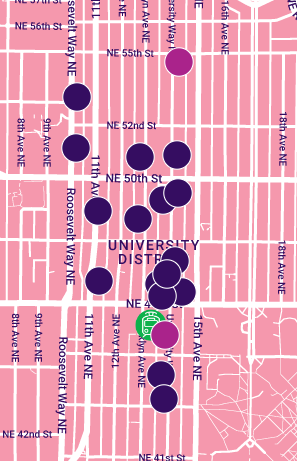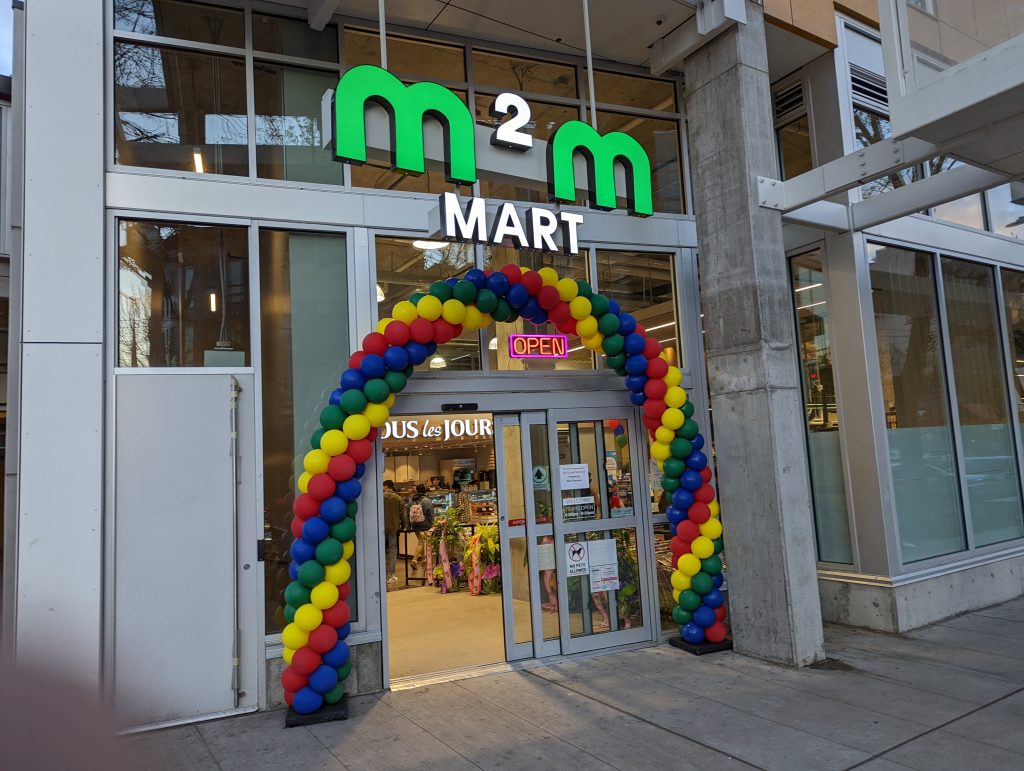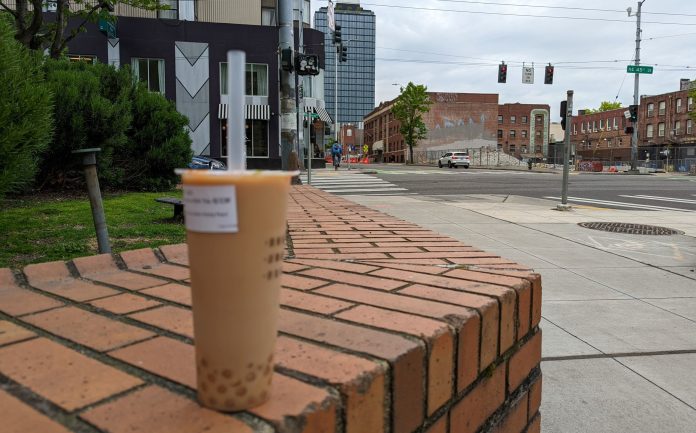
This past April 30th, the University District played host to its first Seattle Boba Fest. 18 businesses participated in the event, an incomplete count of boba-centric businesses in the neighborhood. In 2019, The Daily counted a rough 20 boba businesses in the U District, and if the number of restaurants that serve milk tea and other boba-related beverages were included that number would surely climb. Since 2019, boba has continued to proliferate in the U District and even spread into the surrounding neighborhoods of Wallingford and Roosevelt. The rest of Seattle, city proper and metropolitan region, has also seen a stream of new boba vendors.
Boba refers to the black tapioca pearls that accompany a typically sweet milk tea, though the term is often synonymous with the family of drinks that it’s added into. The combination is mythologized to have come from one of two rival tea houses in 1980s Taiwan. A more compelling ancestry comes through inspiration from the 5000-year-old use of sago starch that today takes the fun shape of pearls and gelatinous strands in East and Southeast Asian sweet treats.
The modern boba boom has entered urban cores, with its entry into the U District easily the most prolific example in Seattle. The growth of bubble tea establishments has certainly outpaced the development of suitable commercial development, potentially pushing out other businesses and raising questions around the possible gentrification trends that boba may herald or even produce. In the University District, an influx of bubble tea and other Asian/Asian American businesses have transformed the historical University Way or “The Ave” into what is effectively a secondary Chinatown-International District (CID). It also seems to be a type of gentrification that doesn’t seem to get the attention that it may, or may not, deserve. If anything, this change is met with fanfare, boba gets a festival, and new H Marts produce excitement.
If gentrification is the change of a neighborhood’s character by an affluent force/newcomer then, we might be encountering a type of Asian/Asian American gentrification in areas like the U District seeing an influx of new and upscaled Asian/Asian American businesses. For boba, perhaps an apt comparison would be Starbucks. A 2018 analysis of Yelp and Census data found that for every Starbucks that entered a zip code, associated housing prices increased by half a percent. This isn’t to say that amenities like a Starbucks or a boba shop increase housing due to an “amenity effect.” Little empirical evidence could be found for an amenity effect in a 2021 housing research round up.
The 2018 analysis also echoes that finding as, the “overall finding here is that past Starbucks growth predicts future price growth much more strongly than past price growth predicts future Starbucks growth.” The researchers interpreted these results as Starbucks forecasting the growth of neighborhoods they are opening retail locations in or Starbucks moving into neighborhoods that are gentrifying because they cater to those early movers into “up-and-coming” neighborhoods.
If boba shops have agglomerated around booming housing markets then they may simply be a harbinger for ongoing and incoming gentrification of neighborhoods. This notes, rather than signals, a shift in the demographics of a neighborhood to grow in its Asian American and Asian populations, specifically a younger and more affluent cohort.
In the U District, this population is evident with the international student and perhaps the tech worker. Data from the UW demonstrates that the Seattle campus’s student population of Chinese international students has steadily grown over the past decade, more than doubling from the 1,838 in autumn 2011-2012 to 3,887 in autumn 2021-2022. Census data also demonstrates major growth in the Asian population in the U District’s zip code, with it jumping from 8,180 in the 2010 census to 12,671 in the 2020 census.
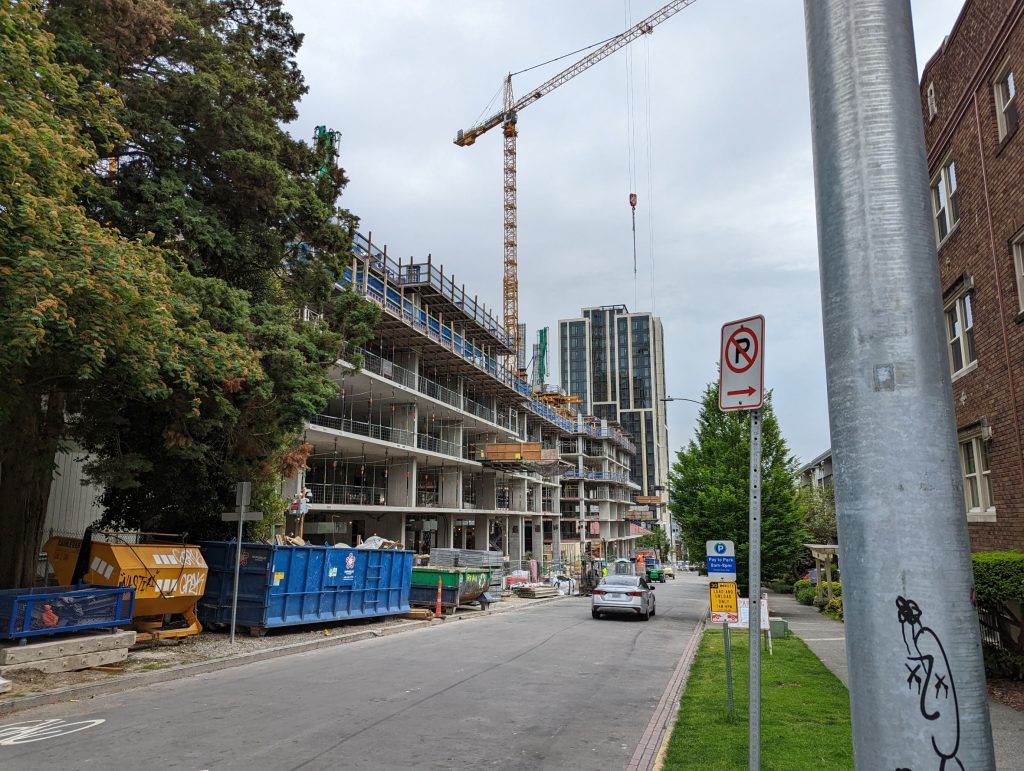
To accommodate this growth, change has clearly been underway in the U District with the construction of ‘premier’ student housing coming with the transformation of the neighborhood with high-rise development. The M Seattle kicked off this development with 24 stories of “designer residences and luxury amenities.” Four more towers have been, or are in the process of, emerging on Brooklyn Avenue NE. Many more developments are in the planning and permitting phase.
The Ave itself has also morphed to mirror the transformation. A Google Street View tour from 2008 and today, demonstrates a massive shift in its businesses with East Asian businesses increasing their presence. Boba, Korean fried chicken, Taiwanese/Korean shaved ice, and a constellation of other foods and treats from the region have made their home the U District’s historical façade. What has been replaced include bygone retail businesses like RadioShack, CD and tape vendors, and copy shops, a taqueria, and a few South Asian restaurants. There is some intra-Asian transformation with teriyaki, Cantonese cuisine, and pho shops closing for newcomers such as Korean foods and markets, and regional Chinese cuisines. There also appears to be a generational shift of Asian businesses remade into more upscale versions of themselves.
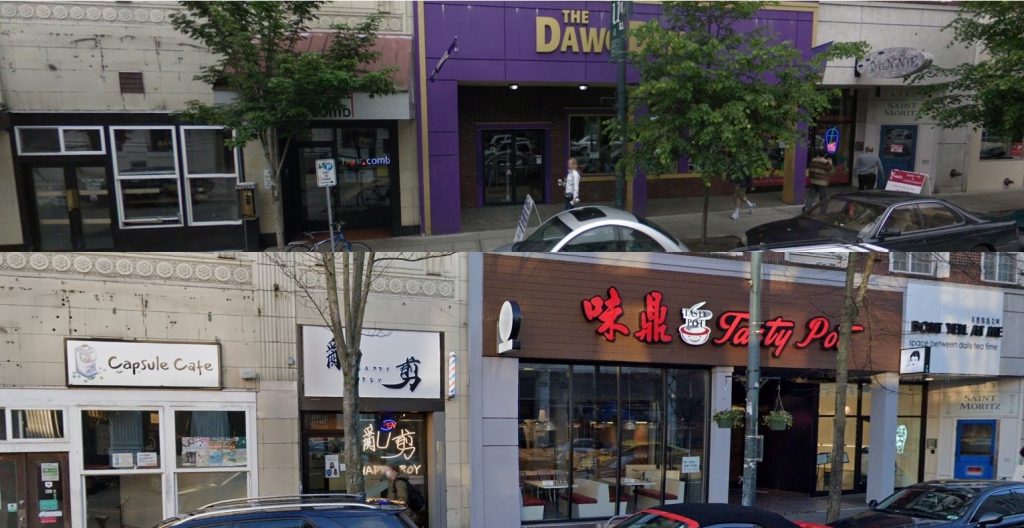
This change within the Asian/Asian American composition is both interesting and potentially raises concerns. Asian/Asian American is the primary way demographic data captures the majority of the world’s population, combining diverse languages, ethnic groups, and cuisines into a term or two does not grant much insight into the communities it represents. With the confusing concentration of diversity packed into the terms Asian and Asian American, there could be less visible flux happening to certain classes and ethnic groups within the broad term’s populations.
The disappearance and replacement of very visible storefronts may serve as a way to see the potential shifts in community, and boba might be just one indicator of this change. Other new Asian businesses types that have emerged the past few years present a fuller illustration of the change happening in the U District. A rough analysis of the changing businesses seems to indicate the U District is becoming more East Asian focused, with Korean foods being better represented and more regional Chinese introduced. South and Southeast Asian business seem to have declined.
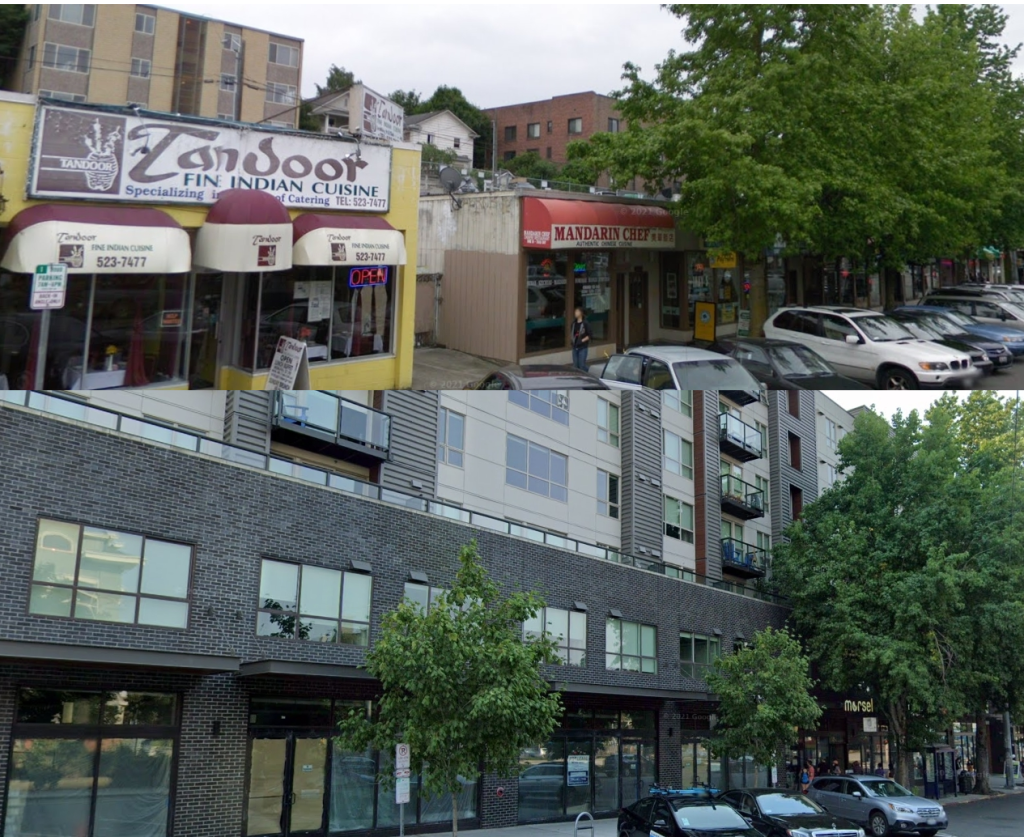
Let’s say that boba is a green light for gentrification that attracts a more affluent population of students and professionals. What have the consequences for the U District over the past few years been? Like the rest of Seattle, housing prices have skyrocketed and retail spaces have seen turnover. Though, how much displacement the gentrification may be causing might be the question at hand, since the vast majority of the neighborhood’s residents are student-aged adults that naturally turn over with their transitory years as college students. Nevertheless, it remains a fact that U District has seen a massive rezone and the introduction of thousands of new homes in the past few years, all while housing costs continue to increase.
What might be more interesting would be to examine this effect on more established Asian/Asian American neighborhoods like the Chinatown-International District. Continuing in this the direction, South Seattle has also seen some flux in its Asian American communities that include some newer boba shops. While, only the CID has the zoning capacity to transform like the U District, other neighborhoods also feel demographic churn. Boba is an innocent sweet treat, but following it will take you to places seeing both celebrated and dreaded change.
Shaun Kuo is a junior editor at The Urbanist and a recent graduate from the UW Tacoma Master of Arts in Community Planning. He is a urban planner at the Puget Sound Regional Council and a Seattle native that has lived in Wallingford, Northgate, and Lake Forest Park. He enjoys exploring the city by bus and foot.


